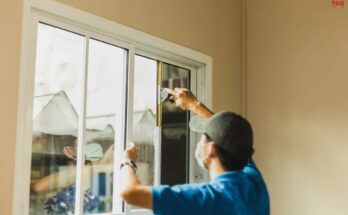As consumer preferences and market forces continuously evolve, real estate development demands a delicate balance of embracing innovation while honoring time-tested methods. Developers aim to elevate quality of life by pushing boundaries on design, sustainability, and community building using cutting-edge technologies and concepts. Yet they must also deliver appealing spaces reflecting heritage, character, and cultural elements that future-proof value no matter how tastes change.
Blending old and new construction approaches
Mastery of real estate development today requires aptitude not just with glossy contemporary building techniques, but also classical and artisanal methods. Savvy developers blend these hands-on historic trades like stonemasonry, ironwork, and carpentry with modern off-site fabrication, eco-materials, and smart functionality. The projects fuse old-world charm and quality craftsmanship with efficient, tech-augmented construction translates into resonance across buyer groups. For redevelopments of existing buildings or integrating vintage elements in new builds, retaining historic details lends soulful character, while allowing contemporary accents to modernize amenities. Renovators face complex decisions around restoration extent to accent ornate past features as centerpieces while upgrading systems or layouts to support mod cons.
Co-creating with local artists
Commissioning regionally acclaimed artists, sculptors, and other specialty creatives to produce original works for new developments acknowledges regional cultural fabric. Showcasing local legends beside international talent also curates an ‘of the moment’ installation resonating with rooted residents as much as drawing fresh interest. Site-specific murals, water features, architectural metalwork, and more cultivate artistic depth and bespoke finishing touches balancing innovation with tradition.
Community-centered planning
Getting community input through iterative engagement during the planning and design stages helps strike the delicate balance too. Collaborating with neighborhood groups and local leaders around what contemporary features could elevate livability while respecting regional lifestyle values and needs shapes alignments. Key questions around topics like sustainability priorities, a mix of public and private community space, or preserving access to beloved area establishments inform decisions benefiting both developers’ aims and communal goals over time.
Adapting materials palettes creatively
Many developers acknowledge beloved existing structures within project sites by adapting or paying homage to original textures and materials innovatively. Rather than demolishing everything not classified as historic, incorporative adaptive reuse allows reimagining elements like iconic neon signage, retro terrazzo floors, or exposed brickwork walls alongside contemporary builds. Repurposing these nostalgic finishes creatively breeds artistic innovation and regional storytelling able to withstand market fluctuations.
Embracing the past while forging the future
As we have explored, real estate development today is a complex balance of honoring enduring cultural elements while integrating leading-edge design. A key mindset shift for leaders in the field requires reframing tradition not as rigid relics of the past, but as time-tested building blocks to forge the future. Take inspiration from enduring methods and materials but employ them in imaginative new ways aligned to what communities require now. It’s an interplay that real estate leaders like jack levy grupo veq navigate daily to pioneer progressive spaces that still exude enduring intrigue and relevance for generations to come.
For example, a historic masonry technique like architectural terra cotta once graced building facades across Spain only to fade from popularity over generations until one developer revived its legacy. By collaborating with a local family workshop specializing for four generations, stunning new terracotta tiles anchor contemporary buildings in tradition yet feel novel and responsive to current housing needs. Other development firms partner with cultural institutions to uncover centuries-old construction methods from archives and integrate them alongside modern builds attuned to sustainability demands today.




